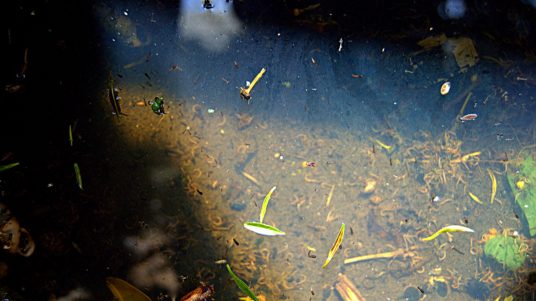Waterborne Diseases and the Power of Technology to Save Lives
Worldwide, 1.1 billion people lack access to improved water supplies, and 2.4 billion do not have access to sanitation services. Hundreds of millions more rely on improved water supplies that are not safe because of contamination. These conditions lead to more than 2 million deaths annually, with illness affecting an even larger number of people. Diarrheal diseases, which are frequently transmitted by contaminated water, continue to be a leading cause of morbidity and mortality, especially among children.
Waterborne diseases are caused by a variety of microorganisms, biotoxins, and toxic contaminants, which lead to devastating illnesses such as cholera, schistosomiasis and other gastrointestinal problems. They can be transmitted in several ways:
1. Water-borne transmission, in which water contaminated with pathogens is ingested and causes disease.
2. Water-washed transmission in which poor personal or domestic hygiene results in exposure to pathogens through a person-to-person mechanism
3. Water-based transmission through skin contact with water infested with pathogens that spend part of their life cycle in an animal that lives in water
Many developing countries are plagued by waterborne diseases that developed countries left behind decades ago. Illnesses caused by drinking unsafe water kill millions of people annually, primarily affecting communities in Asia and Africa. Such diseases stem from consuming water that has been contaminated by animal or human feces. All these illnesses can be prevented by giving people access to safe drinking water. Humans need clean water to accomplish their daily washing, bathing, cooking, and drinking in order to stay safe and healthy.
Water disinfection and Sanitation Technologies
To ensure clean water supply in the developed world, engineers have created treatment systems to provide safe drinking water from both surface water and groundwater sources. This includes physical (i.e. filtration), biological, and chemical (i.e. chlorination) processes; these treatments are usually completed in a series and enable the supply of safe drinking water. Some of these technologies and methodologies include:
Membrane processes
Membrane processes are advanced filters that can remove particulate and, in some cases, dissolved contaminants of water. They are effective in the removal of bacteria and viruses and can also remove other contaminants depending on the fabrication of the membrane itself. Much of the most recent research has focused on reducing the pressure needed to drive water through the membrane.
UV disinfection
UV light is an invisible part of natural sunlight, between visible light and x-rays. Classic UV disinfection system uses mercury vapor lamps to produce UV light, that disinfects by penetrating microorganisms, destroying their DNA, and prevents the organism from being active and multiplying. UV light disinfection systems will only disinfect water at the point of contact, with no residual disinfectant in the water downstream.
Ozonation
Ozonation is a chemical water treatment technique based on the infusion of ozone into water. Ozone is a gas composed of three oxygen atoms (O3), which is one of the most powerful oxidants. Ozonation is a type of advanced oxidation process, involving the production of very reactive oxygen species able to attack a wide range of organic compounds and all microorganisms and pathogens. Ozone production from oxygen or air, requires high energy and is therefore costly.
Chlorination
Chlorination is an effective and inexpensive disinfectant and is most commonly used in drinking water treatment all over the world. Chlorine kills pathogens and oxidizes iron, manganese, along with taste and odor compounds in water. It can be added to the water in different stages during the water treatment process or as a final treatment step to ensure safe drinking water. While it is effective in improving water quality and killing pathogens, chlorination may lead to the formation of by-products that can be toxic or cause taste and odor problems for drinking water, so care should be taken to prevent the formation of these compounds.

